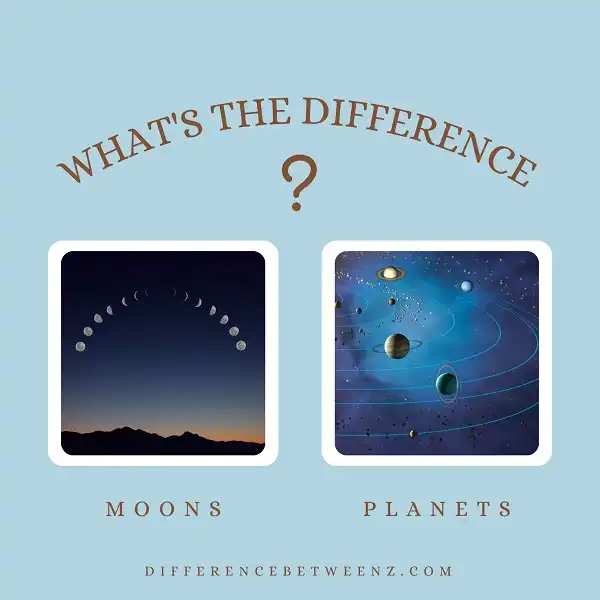Moons vs. Planets
What is difference between moons and planets? The space is very rough and there are many things that can be found in it, some probably have not even been imagined so far; however, others have been considerably studied.
In addition to all stellar dust, special debris, areas with strange behaviors of gravity … There are some astronomical bodies that by their relationships and behaviors attract attention more often than others. For example, many planets have satellites. Our planet has one: the Moon. This leads to the question “What is the difference between moons and planets?
Difference between Moons and Planets
It is important to clarify that although only our satellite is called Moon, we often use the word “moons” to refer to satellites in a general sense; therefore, it is important that before beginning to read what follows, keep in mind that the words moons and satellites will be used synonymously or interchangeably.
If you have doubts about the difference between satellites (moons) and planets or just search for a little more information to complement what you already know, then continue reading, because below we explain everything you need know about this interesting topic.
Planets
The planets are objects that orbit around a star or the remains of the latter, this mainly due to the gravity that both bodies possess. They usually follow an elliptical orbit; but the shape can vary depending on the gravitational force of each particular planet and star.
Likewise, it is the gravitational force that makes it possible for the planets to have a round shape. In addition, this force is powerful enough that the planet manages to clean up all the debris that may accumulate around it. Most of the waste is absorbed by the planet, but in some cases it is pushed into space. When an object appears that is large enough to have a considerable gravitational force by itself, then that object can become the satellite or moon of the planet that is close to it.
Moons
On the other hand, moons are the natural satellites of the planets. This orbit around a primary body that is not necessarily limited to a planet could also be an asteroid.
The moons that until now we know are rocks that were left after the formation of the solar system and the planets. These rocks fell into orbit with the largest body and close to them: asteroids or planets. Some, who did not find a body that had the characteristics mentioned above, continued to drift.
Finally, moons vary greatly in size; some are even larger than planets. For example, Ganymede, the moon of Jupiter and Titan; that of Saturn is larger than the planet Mercury. Likewise, just as there are planets without moons (Mercury and Venus), there are others that have more than twenty moons (Neptune and Uranus), but ultimately the true difference between planets and moons is that the former orbit around stars , while the latter are made around planets, asteroids and other primary objects. Satellites only orbit stars as they follow their planets.


